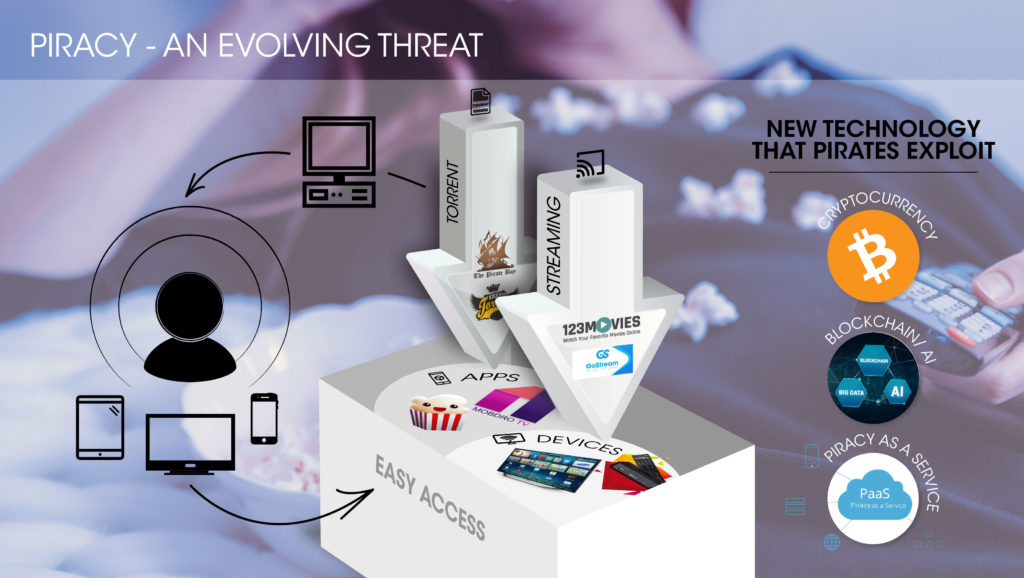by Stan McCoy, President and Managing Director, MPA EMEA
Innovation is everywhere in film and television—on the screens of CineEurope and in the digital technology that enables cutting-edge production and distribution. Unfortunately, while the makers innovate, so do the takers. In the last 15 years, piracy went from geeky to easy. Transmission technologies improved with the advent of streaming, and delivery via new apps and devices bridged the divide between the PC and the living room.

Today’s piracy has become a very different type of organized crime: more sophisticated, tech intensive, very elusive, and massive in scale. Where will it go next? Increasingly, industry antipiracy efforts are bending the trajectory from geeky, to easy, to … broken.
Try accessing a pirate site in much of the EU, and you’ll find ISPs redirecting the top ones to something like Denmark’s “share with care” campaign, inviting users to buy cinema tickets or sign up for legit streaming services. Try looking for alternatives on a search engine and you’re more likely than ever to get malware and clickbait sites posing as pirates. Are you feeling lucky? Sign up for a “dodgy box”—an IPTV device loaded with pirate apps—and you’ll risk finding that you’ve just subscribed to a doorstop. When the pirate app store gets taken down, or the service blocked, as happened to TVaddons, Filmspeler, and still happens to dozens more every week, your box becomes dead weight—unless you’ve got the time and tech savvy to fix it yourself.
Much of this pirate frustration comes courtesy of the Motion Picture Association and a wider industry partnership, the Alliance for Creativity and Entertainment. Recently, for example, ACE reached a settlement that put the infringing hardware and service provider Dragon Box out of business in the U.S. Around the same time, on the other side of the world, ACE helped Thai law enforcement to shutter multiple online piracy sites. ACE is modern antipiracy innovation at its best: global and flexible, using an innovative mix of civil and criminal enforcement.
Meanwhile, audiences find the genuine experience is better than ever, both in cinemas and online. It needs to be: Consumers demand it, and piracy unfortunately remains a big threat.
A pair of studies from Carnegie Mellon University (2014 and 2016) showed that, on average, prerelease movie piracy results in a 19 percent reduction in box office revenue relative to what would have occurred if piracy were only available after the movie’s release. If piracy could be eliminated from the theatrical window, then box office revenues would increase by 14 to 15 percent.
Dodgy boxes also take a bite out of our industry. According to a 2017 Sandevine study, which examined all forms of subscription TV piracy, 6.5 percent of North American households are accessing known subscription television piracy services. Almost 95 percent of TV piracy is driven by purpose-built set-top boxes.
In the U.K., nearly five million adults currently have access to platforms such as illegal Kodi boxes, Amazon Fire TV Chipped Sticks, and illegal streaming apps on smartphones and tablets, according to a 2017 YouGov survey. The government estimates that more than one million illicit streaming devices have been sold in the U.K. in the last two years.
Complicating this threat is a range of new technologies that pirates are seeking to add to their self-enrichment arsenal, including cryptocurrencies and artificial intelligence.
The emerging threats point to a continuing need to work together. Piracy ain’t broke yet. But it can become a lot less attractive if we keep on putting as much innovation into fighting it as cyber-criminals put into building it.



Share this post